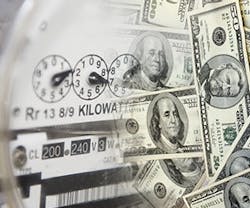People in the media, environmental groups, and the federal government seem to struggle with the conversion of watts to something more meaningful (like dollars). As a result, a public service commercial may yell at you for leaving a small cell phone charger plugged in 24/7 and call it a “vampire” appliance. While their intentions may be good, many people have no clue about the real dollars involved.
More challenging is the incorrect use of electrical terms, like watts, kW, kWh, MW, amps, and volts; natural-gas terms, like CCF, MCF, therms, or Dths; and energy terms, like BTU and MBTU. However, people do understand money, and they rely on trusted professionals to understand the engineering terms and properly convert the data into plain English and monetary terms.
Marketing pitches can also generate misleading information about energy efficiency. Today, everything seems to be a crisis – the world’s air, water, temperature, stock market, real estate, insurance, and the auto industry – which can amp up the marketing.
A common issue is converting watts to kilowatts. The math is simple; just divide the watts by 1,000 to get kilowatts. To move from kilowatt-hours to dollars, multiply the kilowatt-hours by the average cost per kilowatt-hour, which we’ll call 10 cents. Another quick way to determine savings is to take watts divided by 1,000 divided by 10 to get the value of the watts saved based on 10 cents/kilowatt-hour. Is your cell phone charger a blood-sucking device if left on after the cell phone has been recharged? A cell phone charger uses so little power that it doesn’t even register on an amprobe meter. Let’s do the math to show the cell phone charger in real terms. (For inquiring minds, the calculation for single-phase loads is: kW = I x E x PF / 1,000 or amps x volts x power factor / 1,000.) We‘ll assume the electrical load is on 24/7, or 8,760 hours per year.
- 0.0015 amps x 120 volts x .85 power factor = 0.153 watts divided by 1,000 = 0.000153 KW
- 0.000153 KW x 8,760 hours per year = 1.34 kWhs (the standard unit for electricity billing)
- 1.34 kWh x 10 cents / kWh = $0.13 / year, or about 1 cent per month
Why worry about 1 cent/month or even 10 cents/month for these so-called “energy vampire” chargers?
The driver of energy-management investments is the simple payback period and ROI. To get ROI, simply divide 1 by the simple payback period (e.g. 1 / 3.0 years = 33 percent ROI). When banks are only paying 0.05 percent interest on savings accounts, an energy-management investment yielding 33 percent ROI is a great return on investment.
Is It Worth the Investment?
A compact fluorescent lamp (CFL) saves 75 percent of the energy of an incandescent lamp and lasts four to five times longer. For simplicity’s sake, let’s avoid life-cycle costing or net present value (NPV) and stick with simple payback period and ROI. We can look at the cost of a CFL ($2) or the “price premium” over the old-fashioned incandescent lamp (50 cents). Our premium cost of $1.50 needs to yield a reasonable ROI. Let’s again assume 8,760 hours to keep the energy model simple. We’ll assume a 60 watt incandescent is being replaced with a 15 watt CFL (4:1 ratio) that produces the same amount of light.
- (8,760 hours x 45 watts saved) / 1,000 = 394 kWh saved per year
- 394 kWh x 10 cents / kWh = $39.40 savings per year
- Cost Premium $1.50 / $39.40 savings per year = 0.04 year simple payback period, or about 2 weeks
- 1 / 0.04 year payback period = 2,500 percent ROI
A 19 size, standard LED lamp has been offered for $99 (although the price is dropping every month). LED saves 90 percent compared to incandescent and lasts 25,000 to 50,000 hours.
- (8,760 hours x 54 watts saved) / 1,000 = 473 kWh saved per year
- 473 kWh x 10 cents / kWh = $47.30 savings per year
- Cost premium $98.50 / $47.30 savings per year = 2.08 years
- 1 / 2.08 payback period = 48 percent ROI
